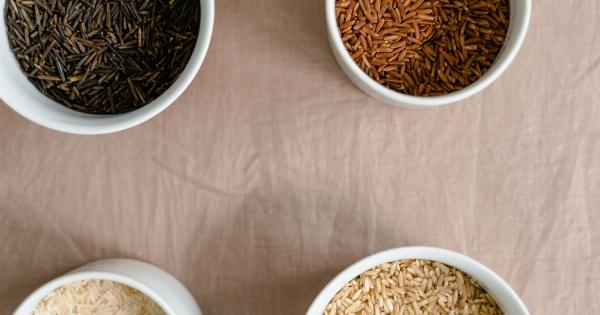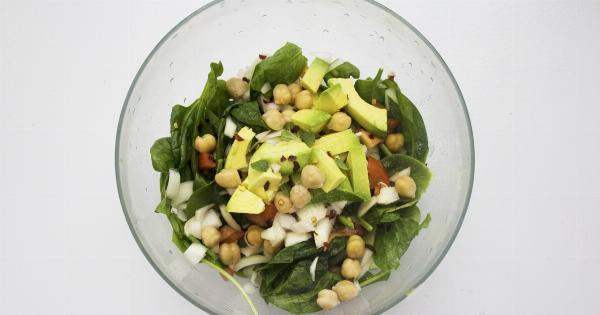Cow’s milk has been a staple in the human diet for centuries. Known for its rich nutritional profile and versatility, it is a popular choice for consumption and used in various dairy products.
However, in recent times, another type of milk has gained attention for its potential health benefits – herbal milk. In this article, we delve into the world of cow and herbal milk, exploring their differences, nutritional values, and potential advantages.
1. Cow’s Milk
Cow’s milk is widely consumed and known for its creamy taste. It is packed with essential nutrients that promote growth and development in humans. Here are some key points about cow’s milk:.
– Cow’s milk is an excellent source of high-quality protein, containing all the essential amino acids required by the body.
– It is rich in calcium, which is vital for healthy bones and teeth.
– Cow’s milk is also a good source of vitamin D, necessary for calcium absorption.
– Additionally, it provides important nutrients like vitamin B12, phosphorus, and potassium.
2. Types of Cow’s Milk
There are several variants of cow’s milk available, catering to different dietary preferences and needs:.
– Whole milk: Contains all the natural fats and nutrients present in cow’s milk.
– Skim milk: Fat-free milk obtained by removing the cream. It has a lower calorie content.
– Low-fat milk: Milk with a reduced fat content, typically 1-2%.
– Flavored milk: Cow’s milk with added flavors such as chocolate or strawberry, appealing to children and those with a sweet tooth.
– Organic milk: Produced from cows raised according to organic farming practices, ensuring no exposure to hormones, antibiotics, and pesticides.
3. Herbal Milk
Herbal milk, as the name suggests, is a type of milk infused with various herbs. These herbs can bring additional health benefits and flavors to the milk. Some common herbs used are:.
– Turmeric: Known for its anti-inflammatory and antioxidant properties.
– Cinnamon: Can help regulate blood sugar levels and contribute to heart health.
– Ginger: Offers digestive benefits and can alleviate nausea.
– Ashwagandha: Known for its adaptogenic properties and potential stress-reducing effects.
– Cardamom: Aids digestion and provides a pleasant aroma.
4. Nutritional Value of Herbal Milk
The nutritional composition of herbal milk may vary depending on the specific herbs used. However, herbal milk often retains the nutritional benefits of cow’s milk along with additional advantages offered by the herbs. Some potential benefits are:.
– Enhanced anti-inflammatory properties from turmeric.
– Improved digestion and gut health due to ginger and cardamom.
– Potential stress relief and adrenal support from ashwagandha.
– Blood sugar regulation and heart health benefits from cinnamon.
5. Choosing Between Cow’s Milk and Herbal Milk
When deciding between cow’s milk and herbal milk, it ultimately depends on personal preferences, dietary requirements, and potential health benefits sought. Here are a few factors to consider:.
– Nutritional needs: Cow’s milk provides a well-rounded nutrient profile, while herbal milk offers additional benefits from specific herbs.
– Taste and flavor: Cow’s milk has a familiar taste, while herbal milk can add unique flavors based on the infused herbs.
– Dietary restrictions: Cow’s milk may not be suitable for individuals with lactose intolerance or other dairy allergies. Herbal milk provides a dairy-free alternative.
– Health goals: If targeting specific health concerns like inflammation, digestion, or stress, herbal milk with appropriate herbs may be a more suitable choice.
6. Usage of Cow’s Milk and Herbal Milk
Both cow’s milk and herbal milk can be used in a variety of ways:.
– Direct consumption: Cow’s milk can be consumed as is, while herbal milk can be enjoyed warm or cold based on personal preference.
– Cooking and baking: Cow’s milk is widely used in cooking and baking recipes, while herbal milk can add unique flavors to dishes and desserts.
– Beverages: Cow’s milk is the base for popular beverages like coffee, tea, and milkshakes. Herbal milk can be incorporated into similar drinks, offering additional health benefits.
7. Potential Considerations and Allergies
It’s important to consider potential allergies and intolerances when incorporating cow’s milk or herbal milk into your diet:.
– Cow’s milk allergy: Some individuals may be allergic to proteins in cow’s milk, leading to symptoms like skin rashes, digestive issues, or respiratory problems.
– Lactose intolerance: Many people have difficulty digesting lactose, the sugar present in cow’s milk. This can cause gastrointestinal discomfort and bloating.
– Allergies to herbs: While herbal milk can offer additional benefits, certain herbs may trigger allergies in some individuals. It’s important to be aware of potential allergic reactions.
8. Making Herbal Milk at Home
If you are interested in trying herbal milk, you can easily prepare it at home. Here’s a simple recipe:.
– Ingredients:.
- 1 cup of cow’s milk (or plant-based milk for a dairy-free option)
- 1 teaspoon of desired herb (e.g., turmeric, cinnamon, ginger)
- 1 teaspoon of honey or sweetener (optional)
– Instructions:.
- In a small saucepan, heat the milk and desired herb over low heat for around 5 minutes.
- Stir occasionally to avoid scorching.
- Remove from heat and let the mixture infuse for another 5 minutes.
- Strain the milk to remove any particles of the herb.
- Add honey or sweetener if desired, and stir well.
- Your homemade herbal milk is ready to be enjoyed!
9. Conclusion
Both cow’s milk and herbal milk have their own unique properties and potential benefits. Cow’s milk offers a well-rounded nutrient profile, while herbal milk can enhance nutritional value with the inclusion of various herbs.
The choice between the two ultimately depends on individual preferences, dietary needs, and health goals. Whether you stick to the traditional cow’s milk or experiment with herbal milk, both options can provide nourishment and enjoyment.






























